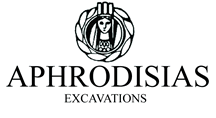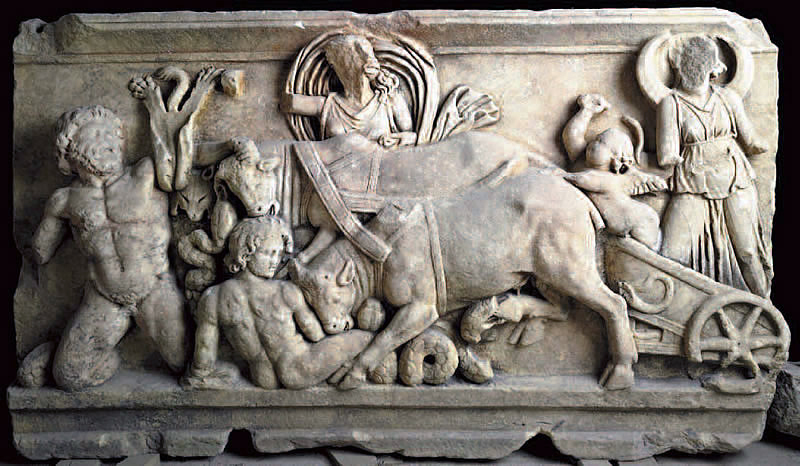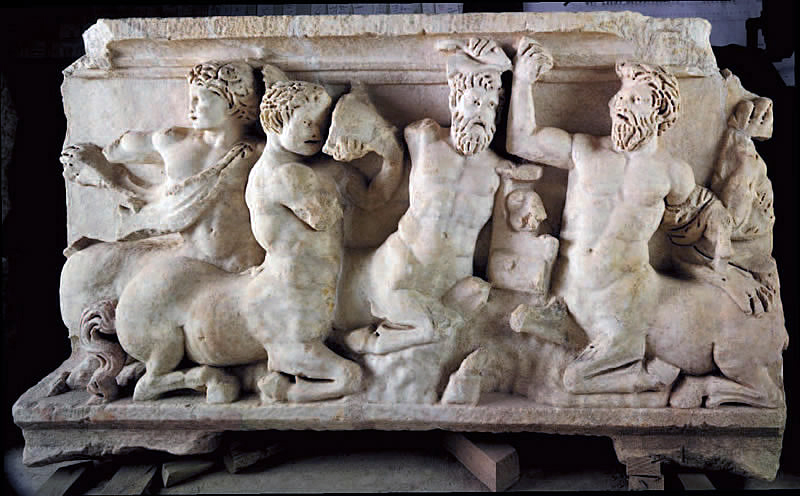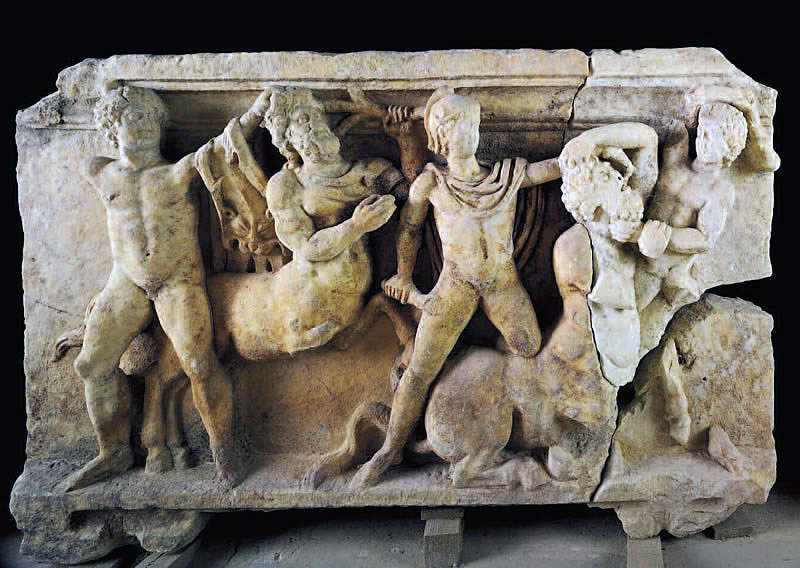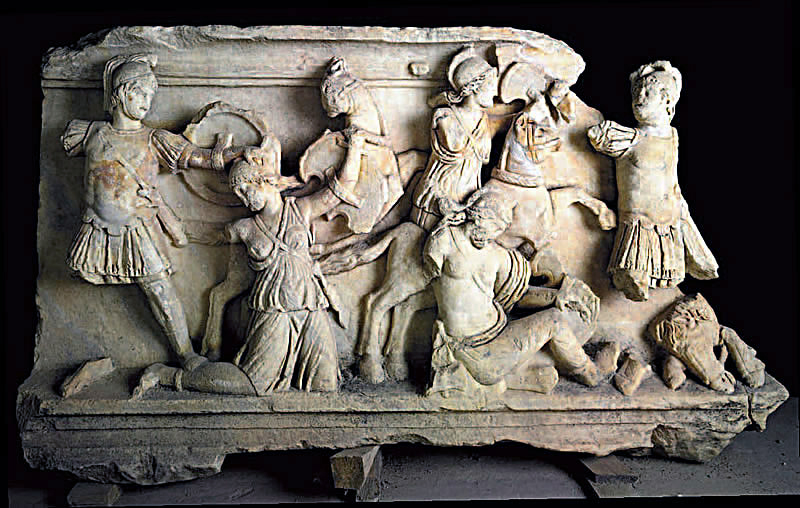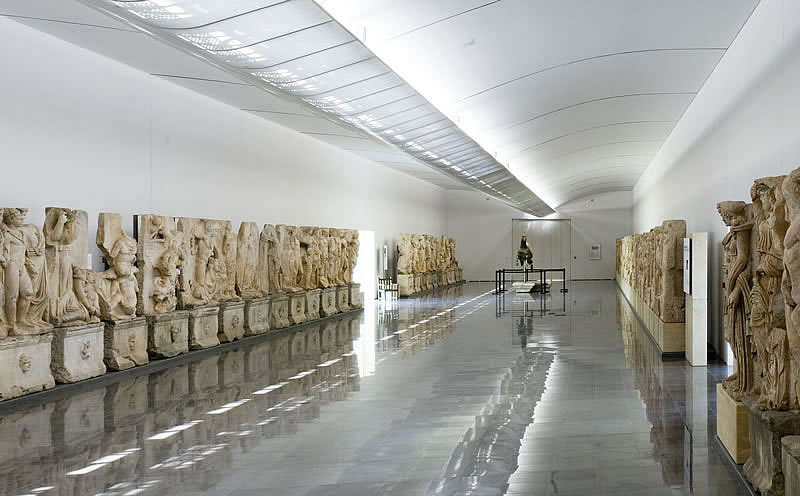Reliefs from the Propylon of Diogenes
Selene (moon) in chariot and Nyx (night) fight giants
The relief shows two giants, one young and one old, and two goddesses. The goddess Selene is identified by the crescent moon around her head. She rides in a chariot pulled by two bulls and driven by a winged putto, who represents Hesperos. Hesperos , the evening-star, is a standard escort of Selene in the same way that Phosphoros, the morning-star, announces the arrival of Helios. In the background, behind the team, is the bust of a goddess who is veiled; she is probably Nyx or Night. This relief shows the onset of night that terminated the battle. The relief is the best preserved of this series found at the Propylon of Diogenes. The destruction of the faces of the divinities was probably due to intentional defacing in the Christian period.
Centaurs at Banquet
Four centaurs recline in a rocky landscape. The two centaurs on the left are youthful, and the two on the right are older and bearded. Three of them seem to be taking part in a banquet. The young centaur in the foreground lifts a cup to his lips; one of his older companions plays a lyre; and the other held a missing object, perhaps a drinking horn, against his mouth. The young centaur on the far left however turns abruptly and blows a trumpet as if to sound an alarm. The scene probably should be interpreted as centaurs at the wedding of Pirithoos before one of them, Eurytion, laid hands on the bride. The peaceful banquet was then interrupted by a brawl between the centaurs and their hosts, the Lapiths. The fight is the subject of the following reliefs.
Herakles, Pirithoos, and Theseus fight Centaurs
The five figures are divided into two groups. On the left, Herakles, recognisable by his lion skin, brandishes his club at a centaur whom he seizes by the hair. The group on the right side reproduces a composition deployed in various media. It shows two warriors, one with a helmet and sword and the other nude with a club, who force a second centaur to the ground. They are probably Pirithoos and Theseus, who often is shown with a club. Theseus had been invited to the wedding of his friend Pirithoos, king of the Lapiths, and he fought at the side of Pirithoos against the centaurs. The centaurs got drunk at the banquet and attempted to steal the bride and her companions.
Amazons fight Greeks
The relief shows Greek warriors fighting Amazons. On the left, a Greek in full armour grasps the crest of the helmet of an Amazon who has fallen from her horse. On the right side of the relief, a second Greek warrior attacks an Amazon whose horse rears. Between them, in the foreground, sprawls a wounded Amazon. The composition draws on well-known compositions of the classical and hellenistic periods.
Found at: the Propylon of Diogenes
